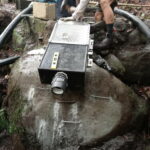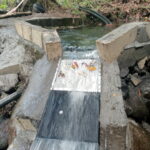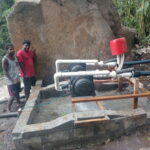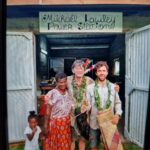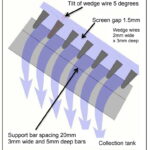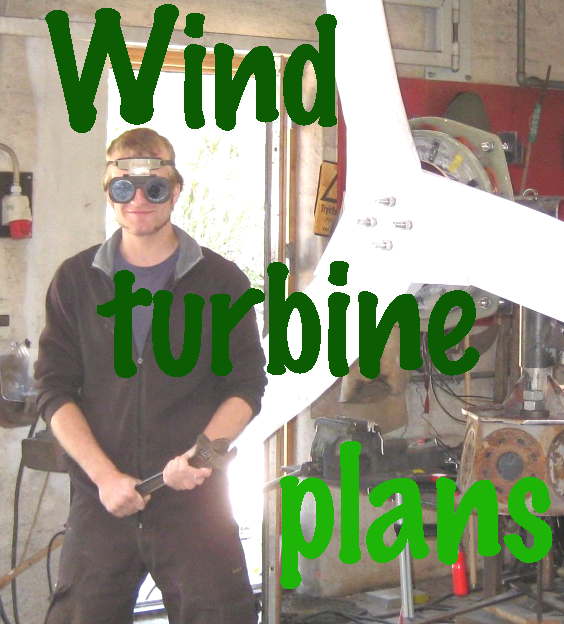Some good photos from a recent installation trip to a Pacific Island by Michael Lawley and his son Edward show best practice for installing their Coanda intake. Water is impounded in a small pool behind the intake so that it spills over the rounded crest, over an acceleration plate that keeps the flow adhering to the surface in an even layer at a good velocity to optimise the function of the Coanda screen.
So often I see coanda screens with water flying right over them or poured in a jet onto the middle or submerged in slow flow. Correct installation is the key to getting the benefits of this type of screen, with its specially shaped bars that use the surface tension of the water to separate it from solid particles.
- Preparing the Coanda site. Lugs on the side of the tank are set into concrete.
- Intake in operation. Water flows over the coanda in a smooth layer at the correct speed.
- Turbines ready to roll.
- Michael Lawley of Powerspout with Ed Lawley
- The Coanda screen uses the Coanda effect, which is the phenomena in which a jet flow attaches itself to a solid surface and remains attached, even when the surface curves away from the initial jet direction.

